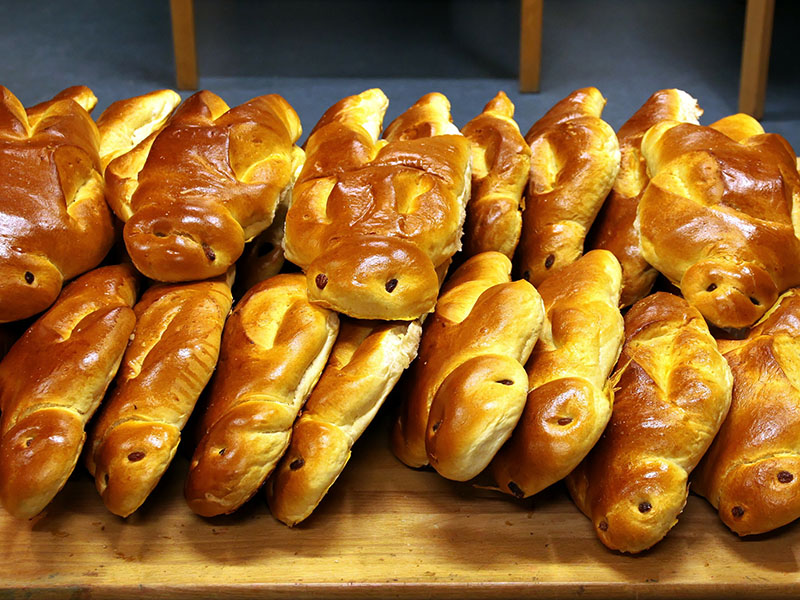These days they are making a comeback, the so-called Weckmänner, this ever-popular yeast pastry in the shape of a man. We are approaching Saint Martin's Day on 11 November, which is quickly followed by Saint Nicholas' Day on 6 December. Both are name days of church saints who have remained in special veneration because of their good deeds, which are probably rather unusual in nature. This is symbolically commemorated on these two days with a sweet gift. Alternatively, this can be a roll, a mare or a Weck(en), or even a pastry in the form of a picture, a Weckmann. Different symbolism.
If this is supposed to be about "tradition", then it is actually a pity that the Weckmann is not left to St. Nicholas alone, and that the St. Martin's gift is not the Stuten alone. That has always been the absolute custom here in the Rhineland, at least until the 1950s. And it still is in some of Bonn's suburbs, and not so rarely in our region, too.
For both saints' legends are quite different from each other and therefore also in their symbolic costumes. St. Martin, this Roman soldier from Tours in France, is known to have given one half of his military coat to a freezing beggar (the other belonged to the state). St. Nicholas, on the other hand, the bishop of Myra in today's Turkey, ensured that three sisters, who were threatened with being left without a husband because of their father's destitution, were all given husbands after all, and thus a livelihood. This is the short version of the two legends.
The Weckmann is therefore the stylised saint bishop, hence with cap (mitre) and with shepherd's crook (instead now usually with clay pipe, which is said to have something to do with the Reformation and the Protestant aversion to saints). St Martin's good deed, on the other hand, is commemorated by the sweet bun. Why? The gift of bread is the epitome of charity par excellence.
When these days the St. Martin's processions are meritoriously prepared and this cultural heritage is so readily invoked, then it would of course be historically more correct to also take the tradition, or better: the symbolism behind it, seriously and to continue this ancient practice of our ancestors. So now, first of all, the St. Martin's Day cake (which, by the way, is offered under this name in bakeries in Bonn)! And a little later we look forward to the Weckmann for Saint Nicholas!
Image: Adobe Stock Images, Kristina Rütten

